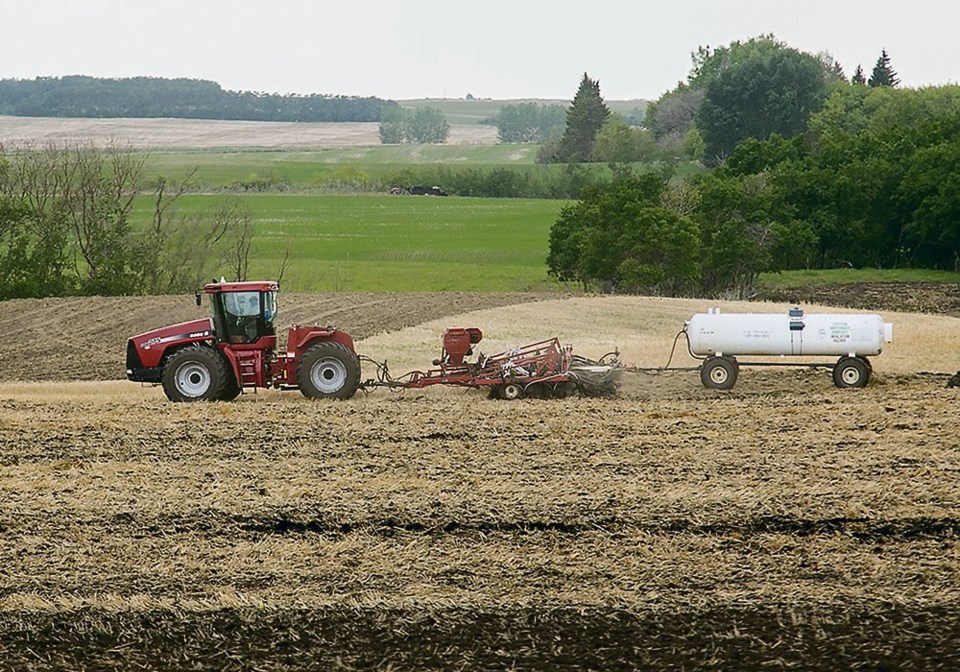WESTERN PRODUCER — Farmers should brace for a continuation of high nitrogen fertilizer prices in 2022, say industry officials.
“We believe that the year ahead will see overall nitrogen pricing at much higher levels than 2016-20,” Bert Frost, senior vice-president of sales, market development and supply chain with CF Industries, said in a recent article he wrote for CropLife.
Strong global demand, high energy prices and government export restrictions are expected to keep prices at the lofty levels farmers experienced in 2021.
Some nitrogen fertilizer prices have come off their record highs but are still at decade-high levels, he said.
A similar message was delivered by Ken Seitz, interim president of Nutrien Ltd., during the company’s fourth quarter 2021 earnings conference call.
“We expect high global energy prices, Chinese export restrictions and heightened geopolitical risks will support prices in 2022,” he said, according to a Seeking Alpha transcript of the call.
DTN fertilizer analyst Josh Linville said the fertilizer market is at the start of an upcycle after a prolonged downcycle between 2016 and 2020.
But he thinks prices will soon cool off a bit.
“When I look out forward, I don’t think we are going to stay at where current values are,” he said.
“I don’t think where we’re at today is sustainable unless we continue to see grains just absolutely rip higher.”
But he noted that urea prices were up US$200 per tonne on Feb. 24, the day after Russia invaded Ukraine, and that remains one of the big wild cards in the fertilizer sector.
Linville said fertilizer demand is strong but not overwhelming and many fertilizer companies completed overdue maintenance and repairs in 2021, which should help the supply side fundamentals.
“Now they’re going to be operational and they’re going to spit out everything they possibly can at current margins,” he said.
His advice to growers is if they are locking up fertilizer prices at today’s inflated values, they should consider offsetting the purchase by selling an equivalent dollar value worth of grain.
“The worst-case scenario is we buy at the height of the fertilizer price and all of the sudden the grain prices start to tumble and we get caught on both sides of it,” said Linville.
Raef Sully, executive vice-president of phosphate and nitrogen with Nutrien, said ammonia demand has been growing by two to three million tonnes per year but supply hasn’t kept pace.
“To make matters worse, we saw the spike in gas prices in Europe that led to some shut-ins and so a very tight situation,” he said during the call.
Forecasts are calling for gas prices in Europe to remain above US$20 per MMBtu (million British thermal units) for the rest of the year so there won’t be much reprieve.
On the urea front, China has implemented export restrictions that will keep 2.5 million tonnes of product off the market this year.
There is increased demand in India and good “grow economics” in North America. So, urea is expected to be another tight nitrogen fertilizer market.
“Overall, average pricing for this year will be higher than last year and we will see the nitrogen business performing better,” said Sully.
“I think it’s going to be a good, strong year for us.”
CF Industries expects U.S. farmers to plant 93 million acres of corn in 2022, similar to last year’s levels.
“With the crop price outlook, farmers should be incentivized to apply fertilizer,” said Frost.
India is the world’s biggest importer of urea and it is short on supply due to poor domestic production of the crop input in 2021 and a lacklustre import program that year.
Brazil imported 7.79 million tonnes of urea in 2021, a nine percent increase over the previous year and is expected to be active again.
Frost said nitrogen inventory is low heading into 2022 due to production constraints caused by severe weather in North America, high energy prices in Europe and export restrictions in China and other countries.
Gas prices in Europe reached $60 per MMBtu in January 2022 leading to the curtailment of 11 million tonnes of annual ammonia capacity in that region of the world.
Prices have since tumbled but they are still at a level that will likely keep ammonia production constrained in that region, he said.
China’s export restrictions are in place through mid-2022. The country usually ships four to five million tonnes of urea per year, or 10 percent of global trade of the commodity.
That is forcing India to shift its buying to suppliers in the Middle East and North Africa, which in turn is constraining supplies in North America, Brazil and Europe.
“This high level of competition for imported tons of nitrogen is unlikely to moderate until at least the middle of 2022 when seasonal demand subsides and the export restrictions could be lifted,” said Frost.
He also blamed the supply shortage on higher-than-usual maintenance activity. Maintenance originally planned for 2020 was pushed back into 2021 due to COVID-related health and safety concerns.
CF industries completed seven major turnarounds in 2021 versus two in 2020.
“Our company expects to return to more typical maintenance schedules, and thus higher production levels, in 2022,” said Frost.

